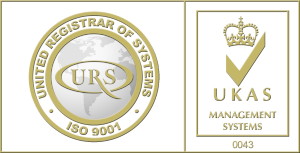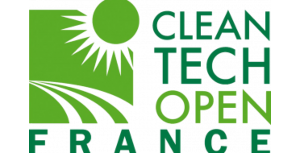Several countries rich in biodiversity (India, China, Brazil, South Africa, etc.) are combating biopiracy by regulating access to genetic resources on their lands and the sharing of benefits derived from them.
They require patent applicants to disclose the origin of the resources and associated traditional knowledge involved in their inventions. Dedicated databases of genetic resources and endemic knowledge are also made available to patent examiners in these countries to promote the granting of more ethical and robust patents. However, these national legal measures are disparate and do not exist within Western states, which are major patent filers. In this context, an international Treaty has just been approved by the 193 member states of WIPO – including the United States, Canada, and many European countries – to impose some of these practices on a larger number of states, thereby promoting ethical and transparent protection of genetic resources and associated traditional knowledge through intellectual property. This article explains the main provisions of this "historic" treaty.
The "Coalition Against Biopiracy"[1]
The "Coalition Against Biopiracy" defines biopiracy as "the appropriation – generally by intellectual property rights – of genetic resources, traditional knowledge, and cultures belonging to Peoples or peasant communities who have developed and improved these resources. Biopiracy includes bioprospecting, patents on life (genes and molecules), and the commercialization of cultural knowledge" (Horizon IRD, "Biopiracy: between illegality and illegitimacy," C. Aubertin and C. Moretti, 2005). The fact that patents can be obtained on endemic genetic resources, theoretically preventing local communities from using them for their commercial benefit, is often criticized by activist networks, as evidenced by the "Captain Hook Awards"[2], which "reward" countries and companies responsible for the greatest acts of "biopiracy."
National Laws Against Biopiracy
In this tense context, several countries rich in biodiversity have implemented national laws regulating access to genetic resources taken from their soil and the sharing of benefits derived from them (hereinafter "APA laws"), to guarantee respect for the sovereign rights of holders and indigenous peoples over their genetic resources and to meet the objectives of sustainable development and ethical use of these resources[3]. These laws generally rely on the principle of free, prior, and informed consent and mutually agreed terms of access with the source country and/or communities holding the resource.
In France, Law No. 2016-1087 for the Restoration of Biodiversity, Nature, and Landscapes came into force on July 1, 2017, imposing stringent declaration and authorization procedures for any entity wishing to use – for commercial or non-commercial purposes – genetic resources taken from French territory (in mainland France or overseas). If commercial development is planned, a benefit-sharing agreement[4] must be established between the user and the Ministry of Environment to ensure fair sharing between resource providers and users, as well as the conservation and sustainable use of French biodiversity.
In parallel with these national laws concerning resource access, national patent laws have been implemented in several countries to facilitate the identification of biopiracy situations. These countries now require that patent applicants mention – or provide to the Offices during the filing of patent applications – administrative information regarding the origin and/or approval of genetic resources (GR) used in the invention (for example, the origin or source of the GR, the existence of national authorizations and/or benefit-sharing agreements regulating access, etc.). This information, present in the filed application text or in an annex document provided at the time of filing, is published with the application 18 months after its filing and is therefore easily verifiable by third parties.
Thanks to these legal provisions and the mandatory publication of any patent application 18 months after filing, the patent system is a good means to publicize and trace inventions involving genetic resources, in contrast to R&D approaches involving resources and experiments whose nature is kept secret.
Databases for Patent Examiners
Patent examiners increasingly use information contained in national databases related to endemic genetic resources (see the list at: WIPO Database Registry). Thanks to these databases, examiners have quick access to documents describing the prior use of a resource by local populations, enabling them, if necessary, to conclude that the invention does not meet the novelty and/or inventive step criteria [5]. The patent system is thus improved, reducing the number of patents granted "by mistake," for example when a resource had already been used locally for the claimed purpose.
Moreover, the patent system is a crucial tool for generating commercial value from a genetic resource and promoting economic development not only for the resource users but also, if a benefit-sharing agreement established under an APA law regulating access exists, for the supplying country or the initial resource holder.
States and their Patent Offices therefore have every interest in promoting the creation of databases storing information related to genetic resources, thereby enabling the granting of more robust and thus more useful patents for applicants, and conversely avoiding the exploitation of genetic resources through contracts or know-how, often kept secret.
National Laws Regulating Disclosure Obligations
In the absence of an international framework, national patent laws regulating disclosure obligations for genetic resources in patent applications have varied considerably both in terms of the nature of the information to be provided (source of the GR, its geographical origin, its legal status, approval number, the contract regulating its access, etc.) and for the sanctions in case of non-compliance with these obligations. For example, some countries propose that if an applicant cannot provide proof of compliance with requirements related to resource access, no patent can be granted (requirement notably in Brazil, India, China, or South Africa). Other countries have also stipulated that this criterion can be used as grounds for opposition or revocation (South Africa, India).
In total, about thirty countries today impose disclosure obligations regarding the origin of genetic resources or traditional knowledge involved in inventions. These measures must be considered primarily when filing national applications directly, but some countries also apply them to national applications derived from PCT applications. A public database containing national legislative texts on disclosure requirements for GR and traditional knowledge is provided by the WIPO Secretariat.
In 2002, a dedicated Intergovernmental Committee (IGC), composed of representatives from WIPO's 193 member states, non-governmental organizations, and an ad hoc group of experts, was created. For 20 years, these members and experts have met to identify the needs, issues, and opinions (divergent or convergent) of member states on this subject. Their work has established the terms of an international treaty that could suit the 193 member states, to i) improve the efficiency, transparency, and quality of the patent system regarding genetic resources and associated traditional knowledge, ii) protect biodiversity, and iii) uphold the rights of states and indigenous peoples over their resources and traditional knowledge.
May 2024: Signing of the WIPO Treaty on Intellectual Property, Genetic Resources, and Associated Traditional Knowledge
During the last Diplomatic Conference held in Geneva from May 13 to 24, 2024, the "Treaty on Intellectual Property, Genetic Resources and Associated Traditional Knowledge" was approved by all WIPO member states, including those (such as the United States) that have not ratified the Nagoya Protocol nor the Convention on Biological Diversity (CBD). According to Pascal Faure, INPI General Director, "this international agreement on intellectual property, genetic resources, and traditional knowledge is a major step forward. After several decades of work and discussions, the diplomatic conference organized by WIPO has resulted in a historic treaty."
When it comes into effect, this Treaty will require contracting states to impose on patent applicants whose invention is "based on" a genetic resource or associated traditional knowledge to disclose its origin (i.e., where the resource was collected in situ or the community that provided the knowledge) or, if this is not known, its source (i.e., the entity that provided it to the inventors) (Article 3.1). If neither of these pieces of information is known, it will be possible to declare so in good faith (Article 3.3). The information resulting from this "disclosure obligation" must be made available and accessible to patent examiners, national administrations responsible for their management, and any interested third party (Article 3.6).
Contracting states must also establish databases cataloging technical information from local and indigenous communities and provide access to them for patent examiners (Article 6). WIPO is expected to implement a rapid and comprehensive search system within these databases to facilitate the identification of possible prior uses during the examination of patent applications, thereby preventing the allowance of "undue" patents.
The aim of these measures is to compel WIPO member states to establish an efficient and transparent interface between Patent Offices and national authorities responsible for access to and benefit-sharing of the resources.
We provide below some details on the implementation of this Treaty.
Where and When to Provide This Information?
The Treaty does not specify in what form the information should be provided to the receiving Patent Office. In fact, according to Article 3.4, each contracting state may impose its own formalities. It is possible that, in the long run, the PCT Regulations will be amended so that the required information can be provided upon filing a PCT application, with effect in all PCT states, without having to repeat the process upon entering national phases (see footnote [4], regarding Article 7 of the Treaty).
Who Will Be Affected?
The disclosure obligation will apply to all applicants seeking a patent in a contracting country when a genetic resource[6] or associated traditional knowledge is necessary to implement the claimed invention. However, the disclosure obligation should not apply to resources only used as "research material" (provided they are not required for implementation). It remains to be seen whether this obligation also extends to inventions based on sequences identified in in silico databases (i.e., without physically using a resource). It appears that contracting states may legislate differently on this point.
What Sanctions Are Provided for Non-Compliance?
The Treaty provides that, in case of non-disclosure, "appropriate, effective, and proportionate" sanctions will be imposed by the states themselves (Article 5). These sanctions can include fines, delays in granting, or even refusal of an application, depending on national provisions. However, states cannot revoke or render a granted patent unenforceable for this reason alone (Article 5.3). An exception will be made if fraudulent intent can be proven, in which case a patent can be revoked (Article 5.4).
When Will This Treaty Come into Effect?
The Treaty will come into effect three months after 15 signatory states have deposited their instruments of ratification or accession (Article 17). The Treaty will then be binding only for these 15 contracting states and for any other state that subsequently ratifies or accedes to the Treaty (Article 18). A non-retroactivity clause is provided so that only patent applications filed after this entry into force will be subject to the disclosure obligation described above.
To fulfill the promises of this historic event, WIPO member states will need to work with national intellectual property offices in the coming years to implement a "disclosure obligation" of the origin and/or source of genetic resources and associated traditional knowledge and the required databases, in accordance with the Treaty's requirements. The first member states to ratify the Treaty will likely be those that have already implemented disclosure requirements and appropriate sanctions. In others (including France and many other Western countries), ratification will occur when their patent legislation adapts to this new requirement.
As many points will be left to the discretion of the contracting states, the entry into force of this new Treaty will have less effect on harmonizing existing national legislation than on increasing the number of states requiring the disclosure of the origin/source of genetic resources (and associated traditional knowledge) and promoting the establishment of databases cataloging them. Thus, this Treaty primarily raises awareness of the importance of tracing genetic resources (and associated traditional knowledge) and of implementing concrete legal, administrative, and/or regulatory measures on this subject.
The signature of this WIPO Treaty will likely be followed, in countries with existing APA laws (notably France), by measures imposing this new disclosure obligation in their patent system. SANTARELLI group's Patent Attorneys will, of course, closely monitor announcements from the INPI on this matter, as well as the requirements in other countries, to properly inform their agents when filing patents in other contracting countries.
By Gabrielle FAURE-ANDRE
[1] "Coalition Against Biopiracy": This is an informal group composed of NGOs and led by the ETC Group, formed in 1995 at the Jakarta Conference of the Parties, bringing together those who ideologically oppose the patenting of life and those who economically consider these rights as obstacles to research and knowledge sharing.
[2] "Captain Hook Awards for Biopiracy"
[3] Final document of the World Conference on Indigenous Peoples, unanimously approved in 2014 by the 193 member states of the United Nations General Assembly (UN General Assembly Resolution A/RES/69/2)
[4] The terms of this agreement are to be provided on the CERFA15785*02 document.
[5] Such a database exists in India under the name "TKDL". This database contains 34 million pages of formatted information on more than 2 million medicinal formulations selected from the heritage of Indian peoples Ayurveda, Unani, Yoga, and Siddha. It is used by examiners from many offices, such as the EPO and USPTO.
[6] A "genetic resource" is defined in the Treaty as "genetic material" derived from a plant, animal, microbe, or "any organism containing functional units of heredity" (excluding humans).













